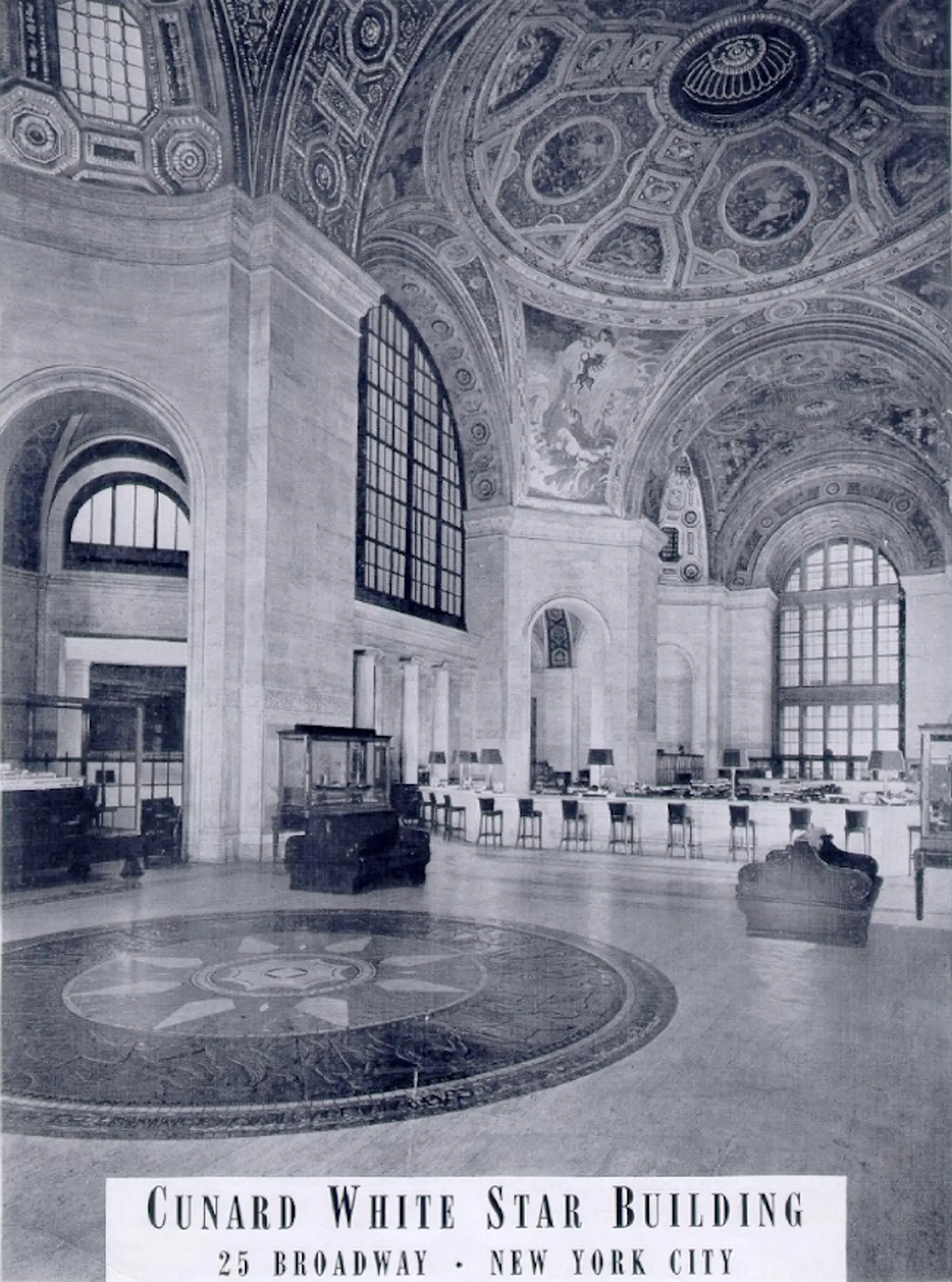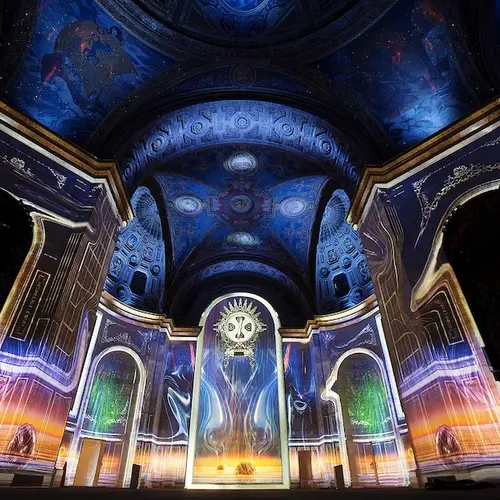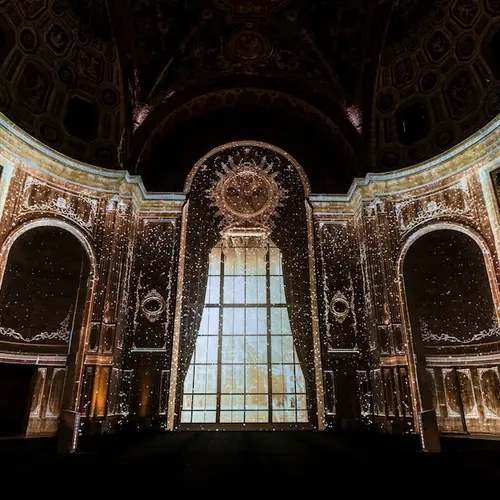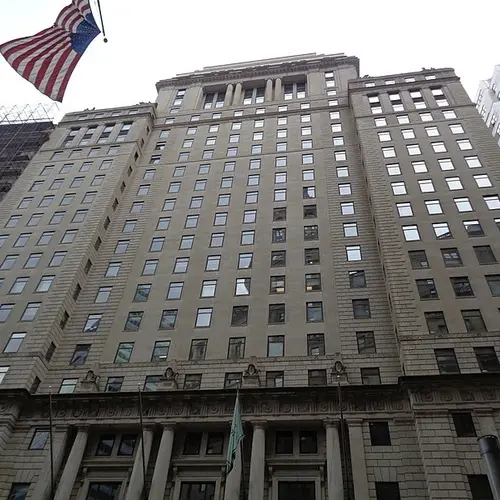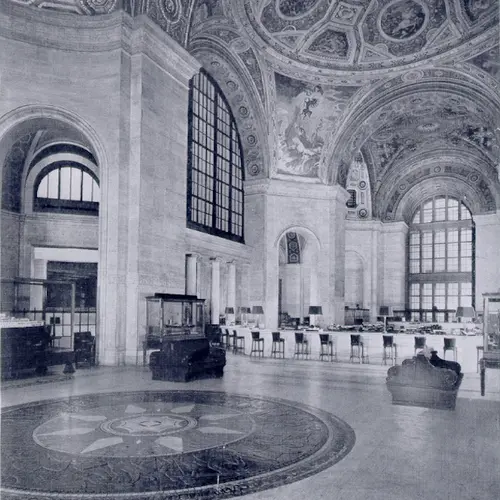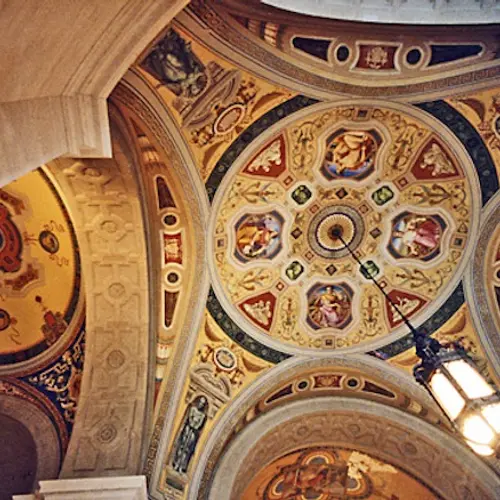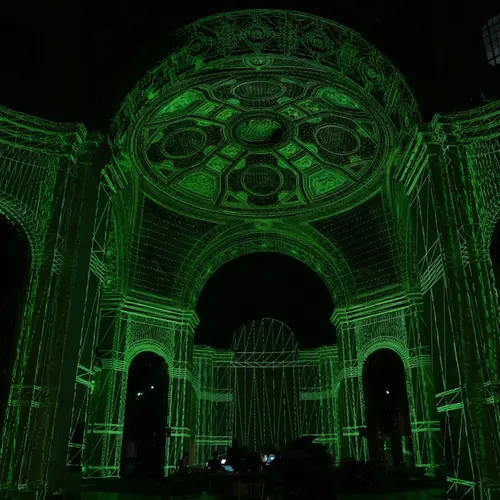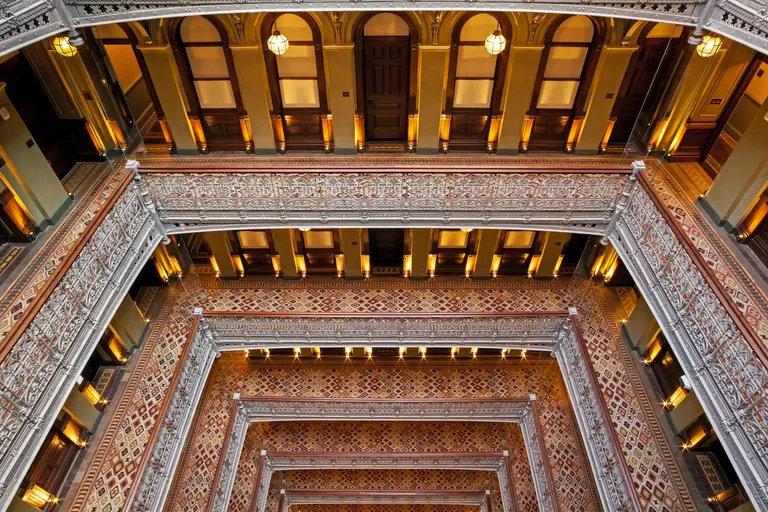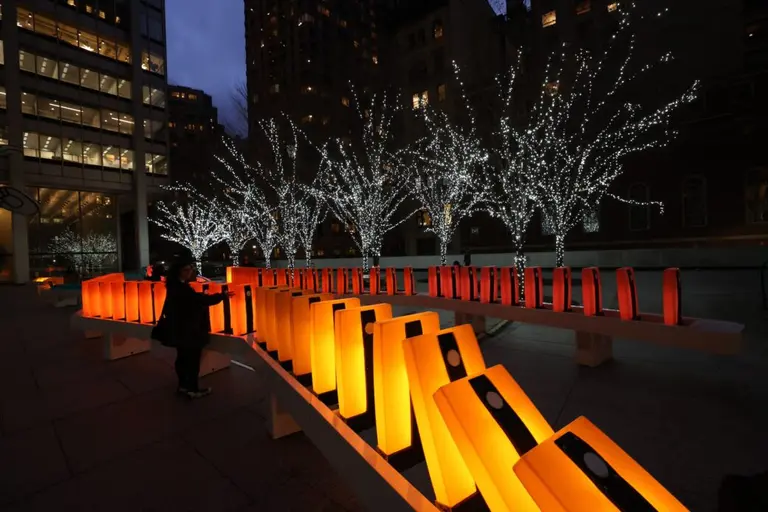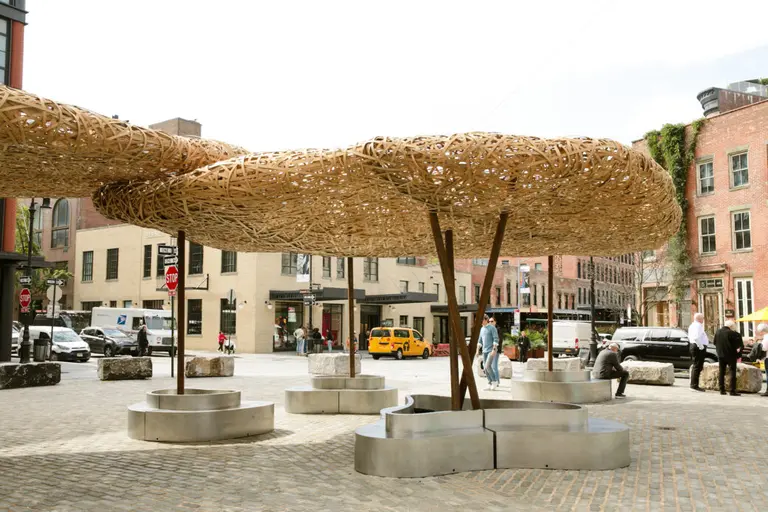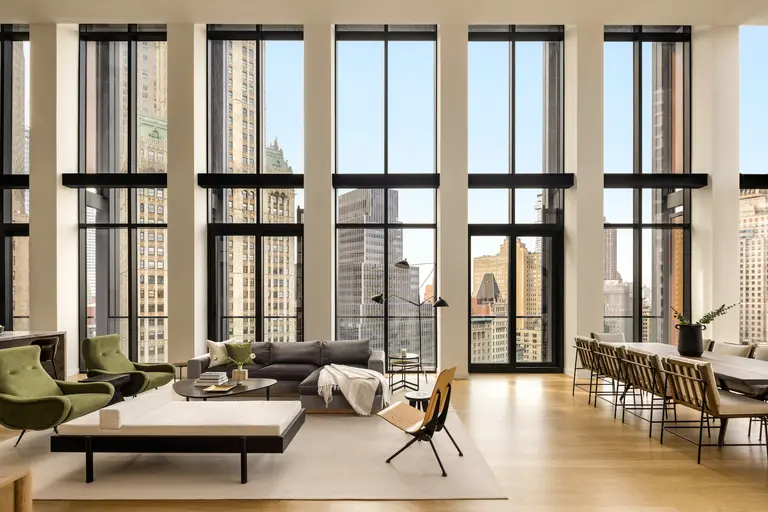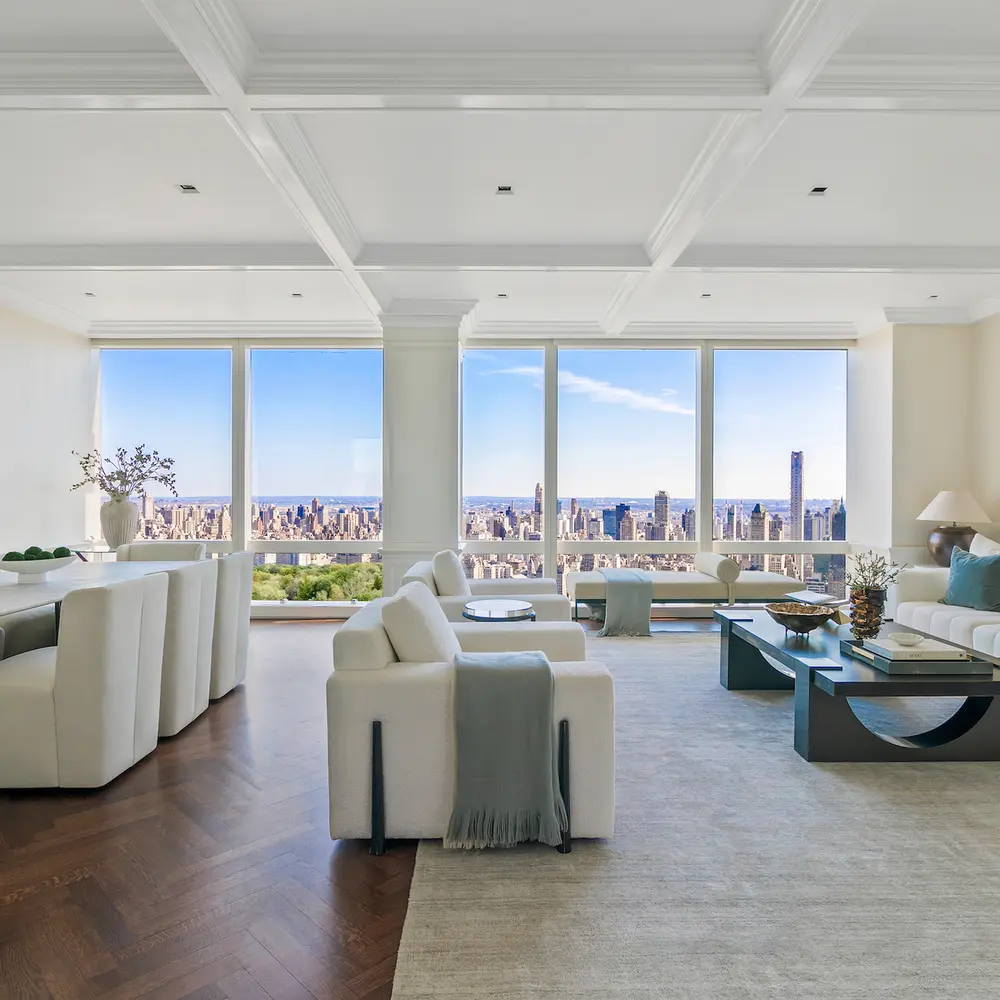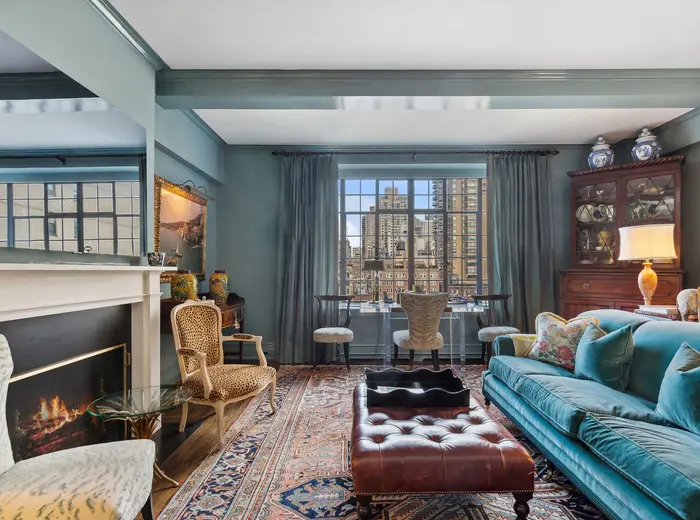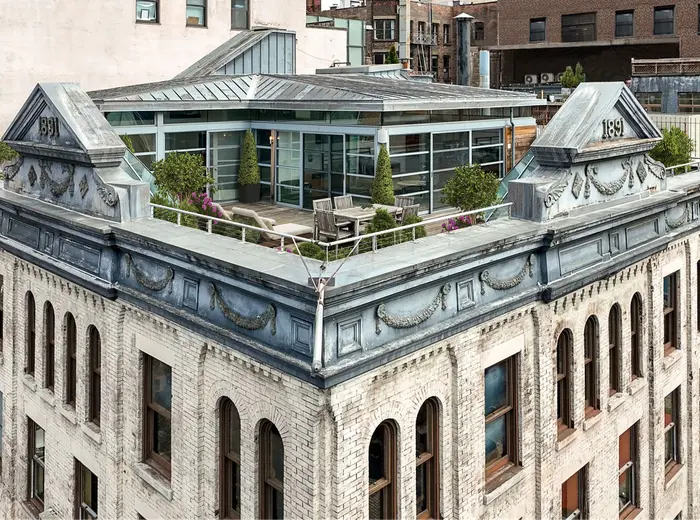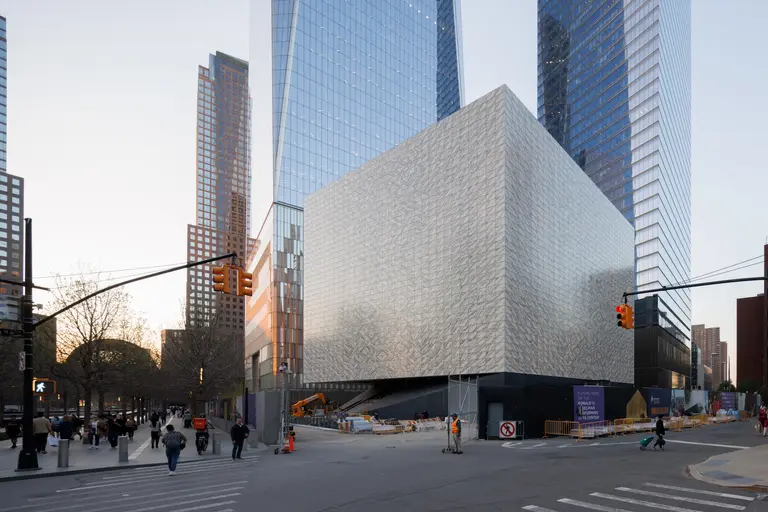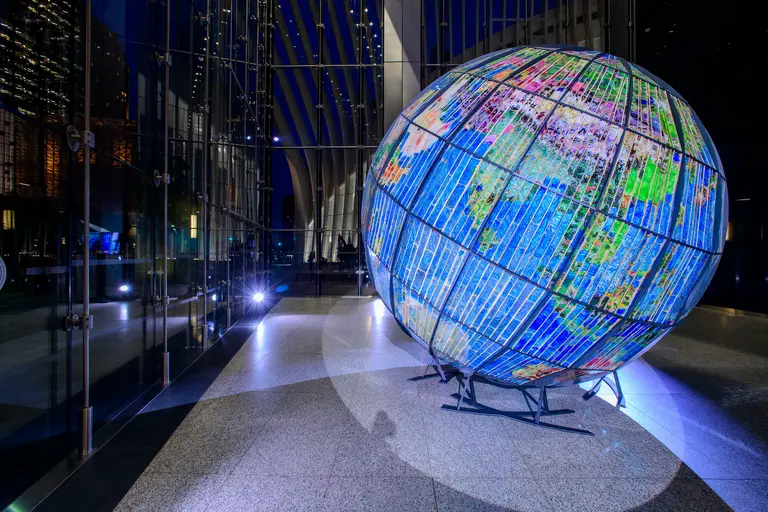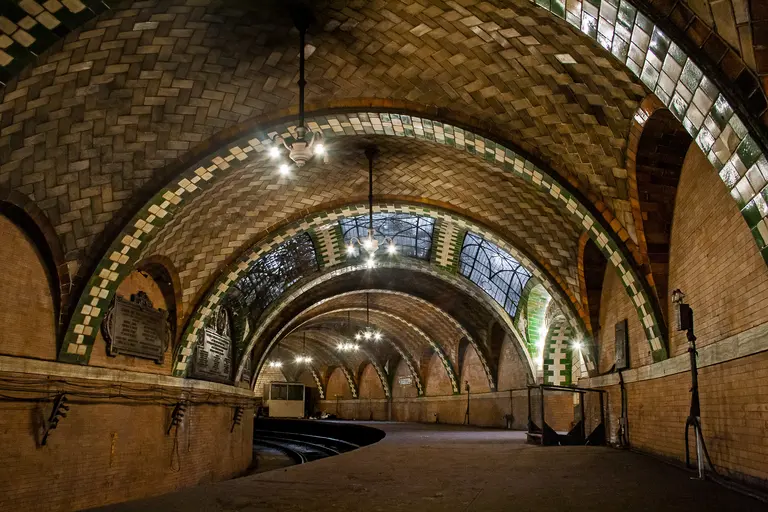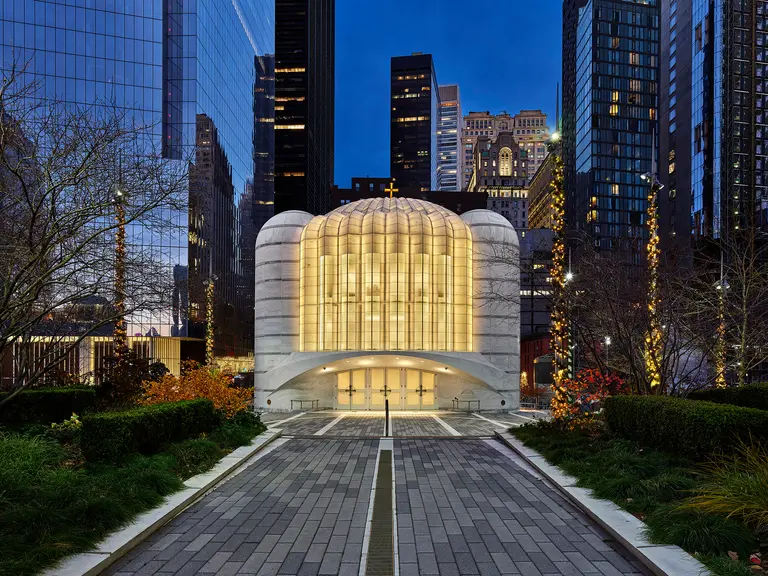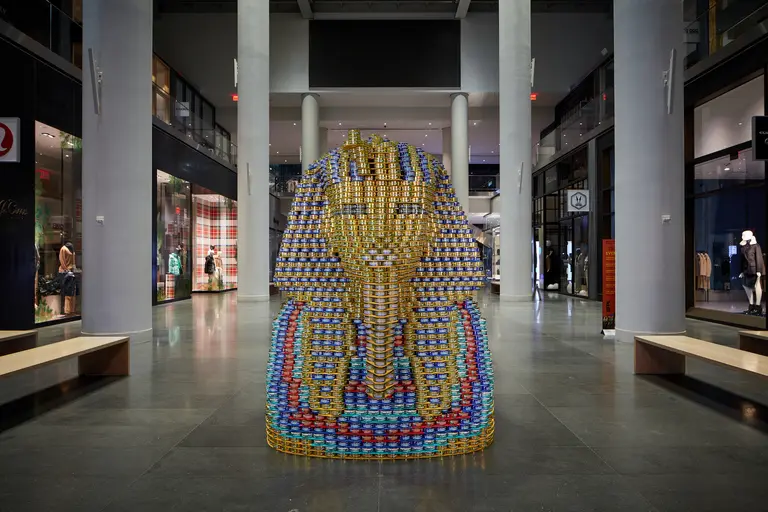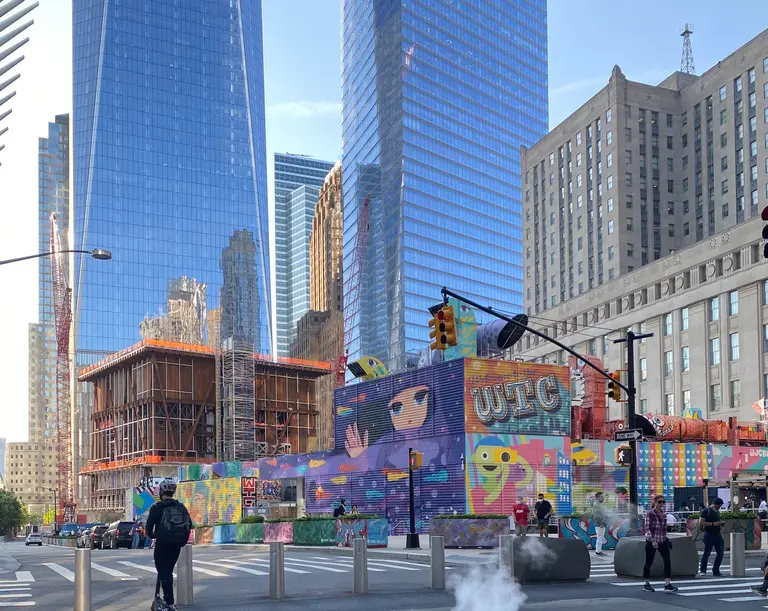Travel on a 1920s ocean liner in the historic Cunard Building’s new multimedia event
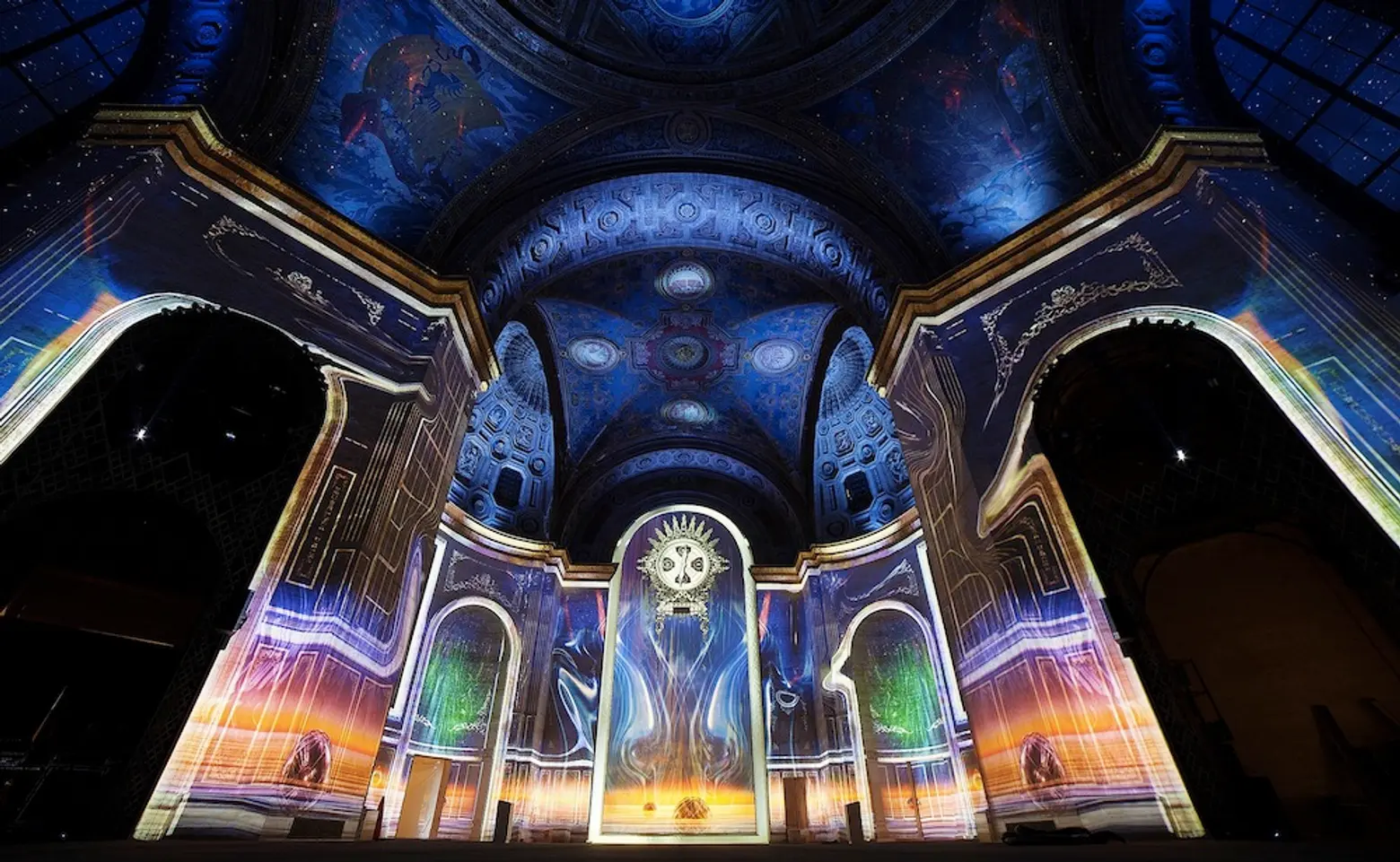
Photo courtesy of D.S. DestiNY
One of Lower Manhattan’s most stunning interiors is getting a moment in the spotlight, thanks to a Montreal-based multimedia company. The building in question is 25 Broadway, also known as the Cunard Building or Standard & Poors Building. The 1920s office was designed with an extravagant great hall for Cunard Line and Anchor Lines. The nautical-themed space, where cruise-goers would purchase tickets, became an interior landmark in 1995.
Moment Factory, a multimedia company known for creating immersive environments, felt the hall would be the perfect place to debut its work in New York City. The design team studied just about every inch of the elaborate room, boasting murals, domed ceilings and marble work, to transform it for visitors while remaining true to the original architecture. The result, as the company puts it, is a “massive 360-degree digital canvas, enveloping its audience in light, color and sound.” 6sqft got a sneak peek of this unique show, which brings you aboard a classic ocean liner and reveals the hall in all its glory by the end of the show.
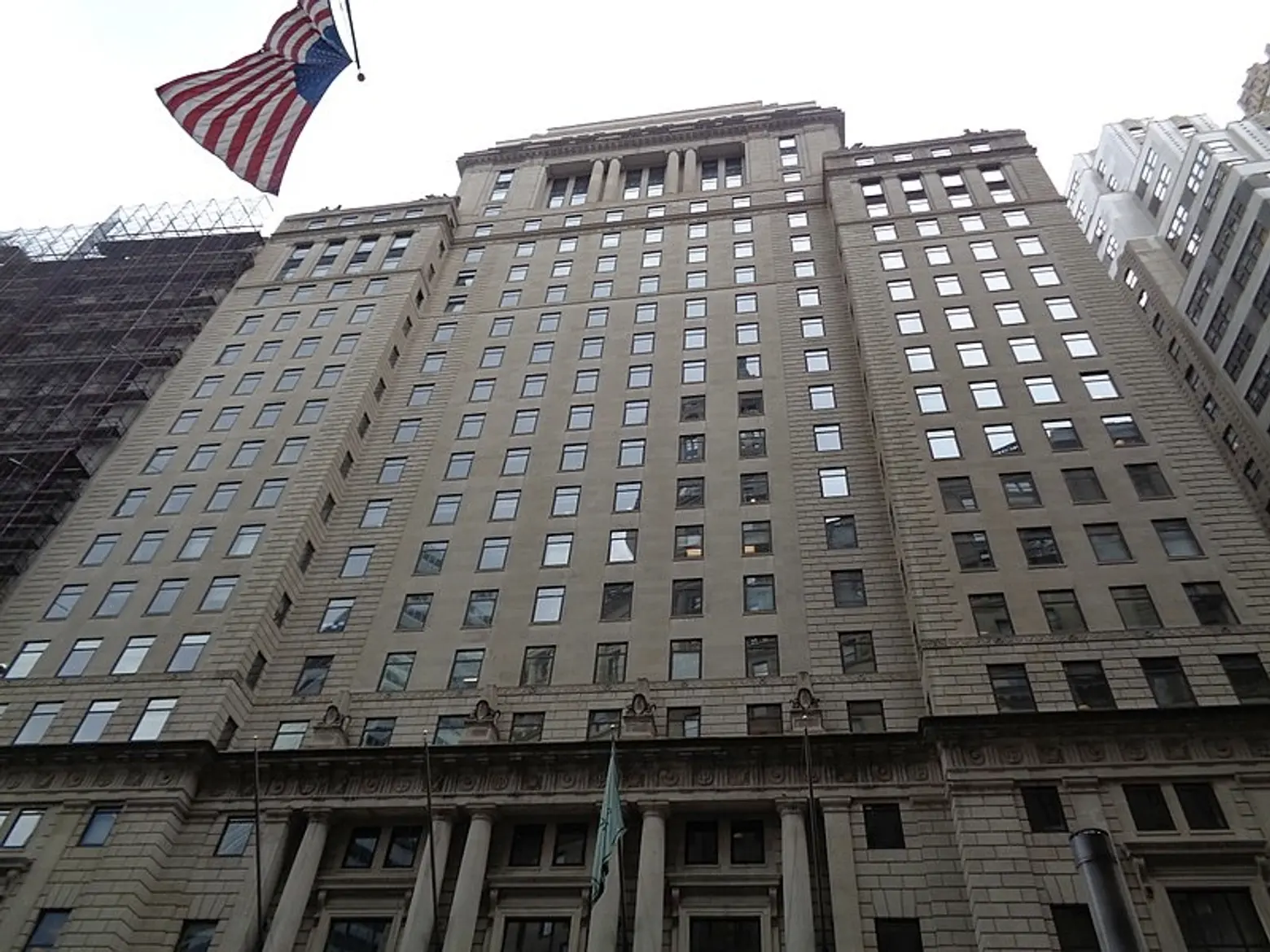 25 Broadway via Wikipedia
25 Broadway via Wikipedia
The Cunard Building was designed between 1917 and 1919 and built between 1920 and 1921 by architect Benjamin Wistar Morris and the firm Carrère & Hastings. The impressive 22-story limestone office, fronted by a neo-Renaissance facade, was immediately held in high regard upon its opening in May of 1921.
But the main attraction was its 185-foot-long great hall, home of Cunard Line and Anchor Lines. The walls, ceilings and 69-foot-tall domes were decorated by Ezra Winter with ornate images of steamship routes and sea life. A New York Times article from 1921 described it as “a series of mural decorative effects probably unsurpassed in the annals of commercial building construction.”
Here are more lavish details from the article:
From the tinted plaster background of these figures the observer gets his first hint of the blaze of color in which the whole scheme of decorations is conceived. Warm, heavy blues, reds, yellows, umbers and tans predominate to blend in a whole reminiscent of the Italian primitives. Passing on into a groined vault you look up to see the seals of English shipping towns as a central feature while below in niches connecting the vaults with the walls of Roman Travertine stone are bas-reliefs portraying the four winds and the four seasons. At the far end of the hall, the Greenwich Street side, is a similar groined vault, similarly treated. Between them is the great central dome containing four roundels of mythological marble figures. Below this dome on the four pendentives are large representations of the vessels in which Leif Ericsson, Columbus, Cabot and Drake pioneered on the Atlantic Ocean. In panels on the walls are maps of the continents executed by Barry Faulkner on the theory of Mercator’s projection but treated decoratively with the same glow of color and touch of mythological interest.
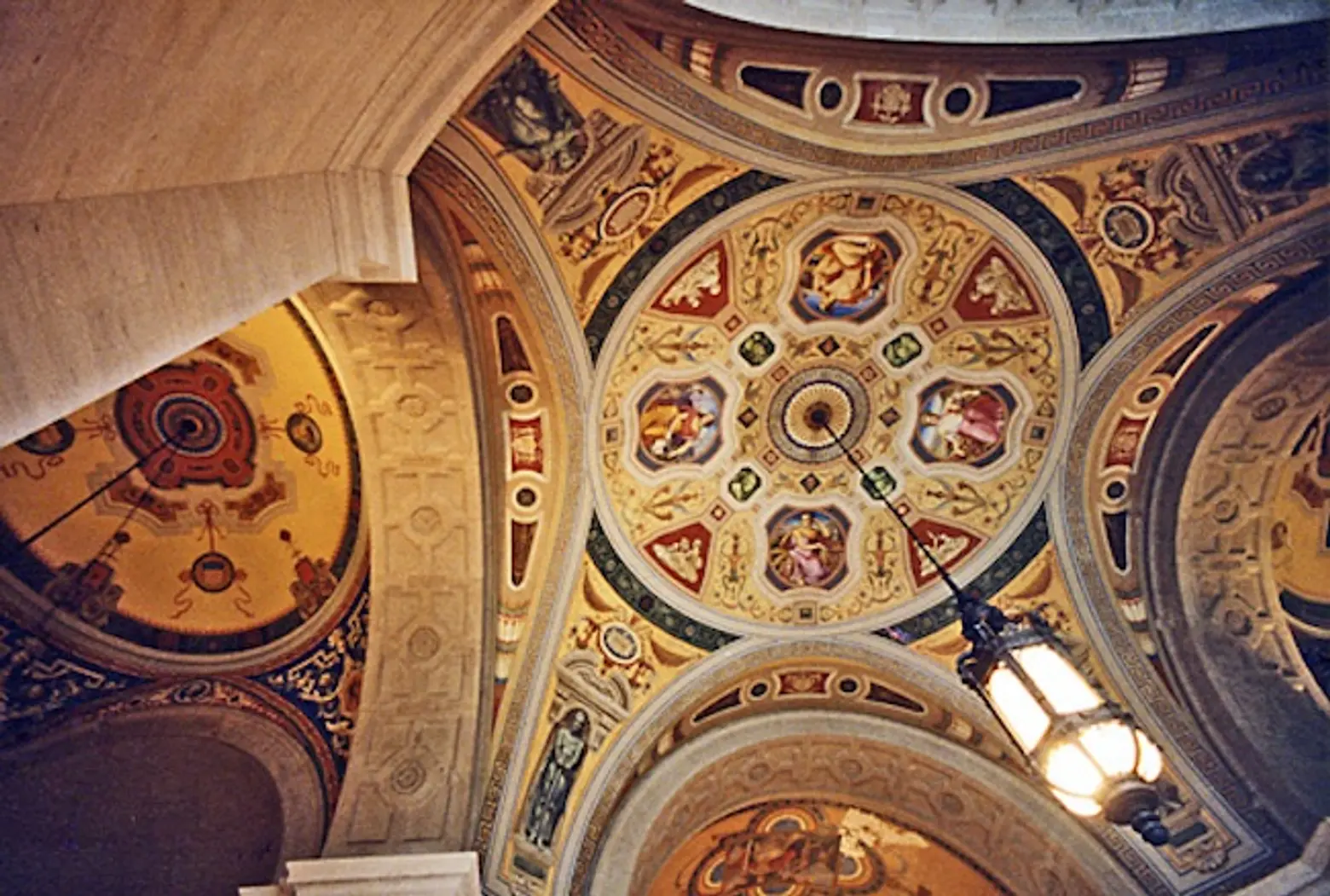 Photo courtesy of the City Review
Photo courtesy of the City Review
As Untapped Cities puts it, such exquisite details “reflect the power of the Cunard Steamship Line during the 1900s.”
But that power didn’t last forever, and Cunard left 25 Broadway in 1968 to move uptown. The hall was left vacant and the building was sold in 1977. The new owners found the grand hall difficult to market to tenants, and it was eventually taken over by the U. S. Post Office. (The post office barred public access to the entire space, but luckily didn’t alter any of the interiors details.) The building was deemed both an interior and exterior landmark in 1995, and the post office branch stayed until 2000.
Today the ticketing hall is owned by Cipriani, which operates it as an event space. The current multimedia show is the result of a partnership between Cipriani and Moment Factory. “I visited the three Cipriani venues they have in New York City… when I walked in here, I was blown away by the magnitude of the space,” Jamie Reilly, Moment Factory’s producer and office director in New York City, tells 6sqft. “We instantly wanted to create a show.”
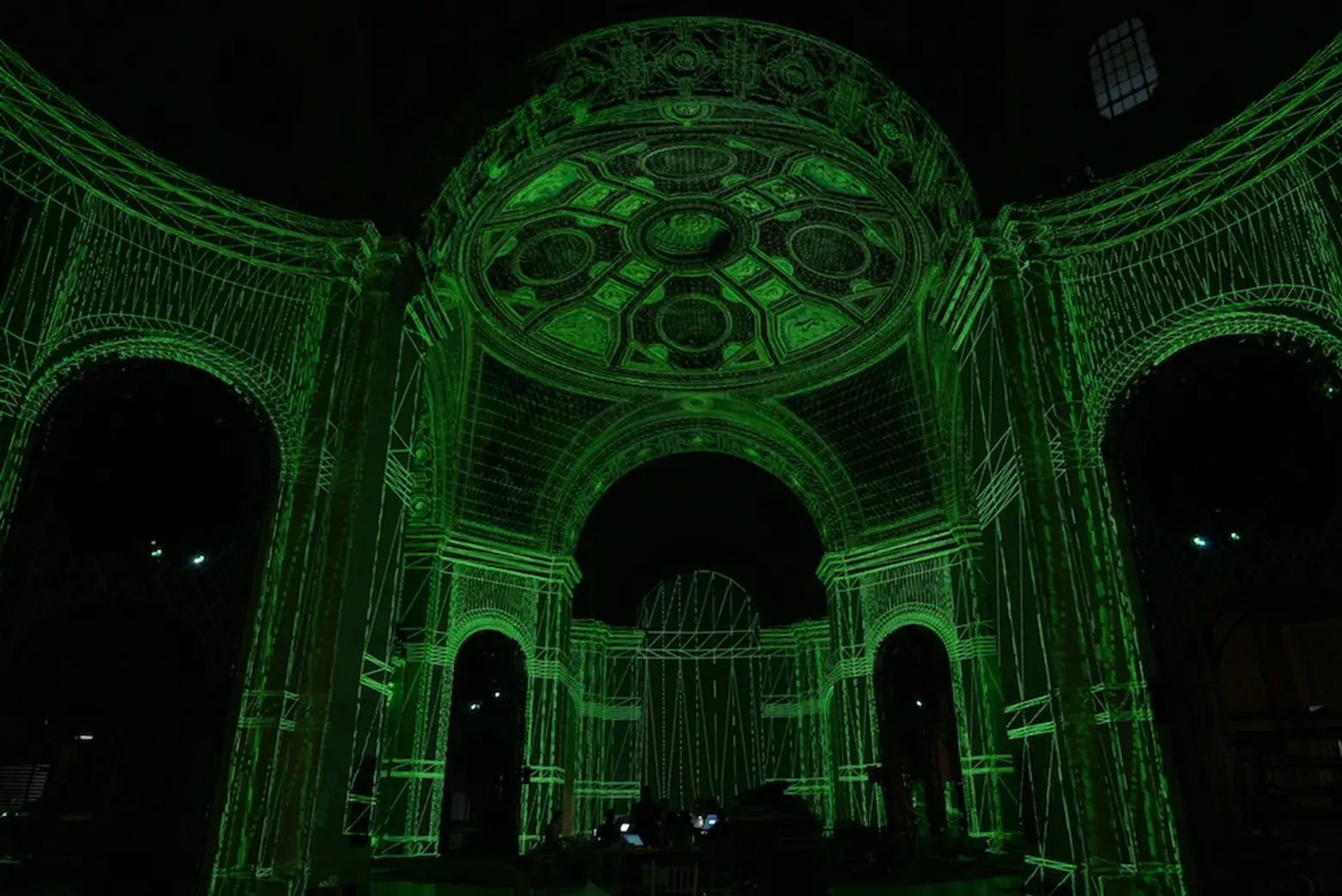 Behind the scenes work, photo courtesy of D.S. DestiNY
Behind the scenes work, photo courtesy of D.S. DestiNY
Inspired by the architecture of the hall, Moment Factory spent over a year to create a 30-minute immersive production complementing nearly every architectural element. To do so, the team devised 360-degree projection mapping, custom screens and enhanced lighting so the space would be visually transformed but not physically altered. “It’s a landmark building, so we couldn’t even put in a nail or screw,” Reilly says. “We had to design structures that could hold multimedia and show equipment without touching the building.” The team came up with a structure that seamlessly integrated with the room’s interior arches.
Upon entering, the audience is free to walk around and explore, using their boarding pass to unlock different immersive experiences through various “dream portals.” Nautical maps and travel routes are projected on the walls.
Once Dream Ship DestiNY begins, the audience leaves a 1920s port on a classic ocean liner setting sail on what’s called the “ocean of dreams.” The idea of the voyage is to portray different visions and hopes of New York City from passengers aboard the ship, as it travels on a transatlantic journey from the old world toward Manhattan. At its conclusion, projections of NYC landmarks — from the Brooklyn Bridge to Statue of Liberty — fill the walls.
The grand finale is the actual hall, illuminated in all its original glory. The architectural details revealed once the lights are on is, undoubtably, a show in an of itself.
Tickets to the show cost between $19 and $29 and are available through January 2019. To purchase, go here.
RELATED:
